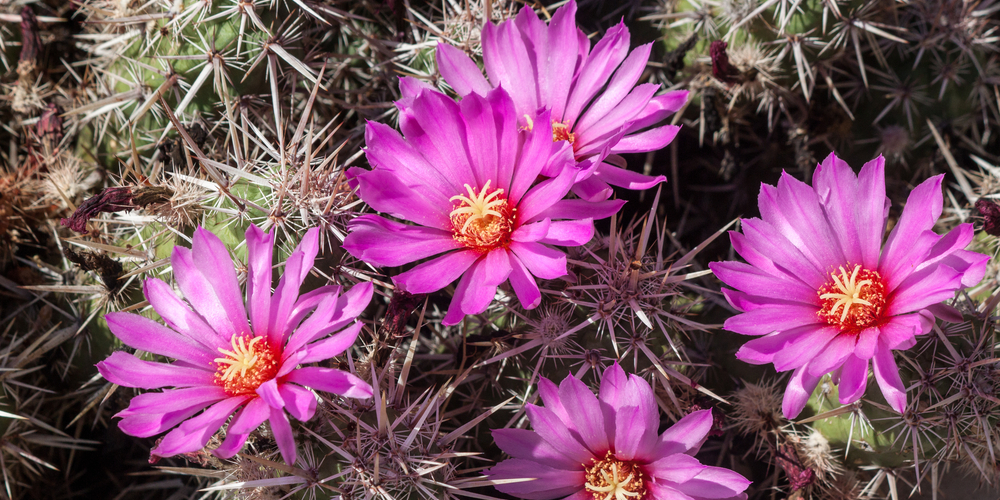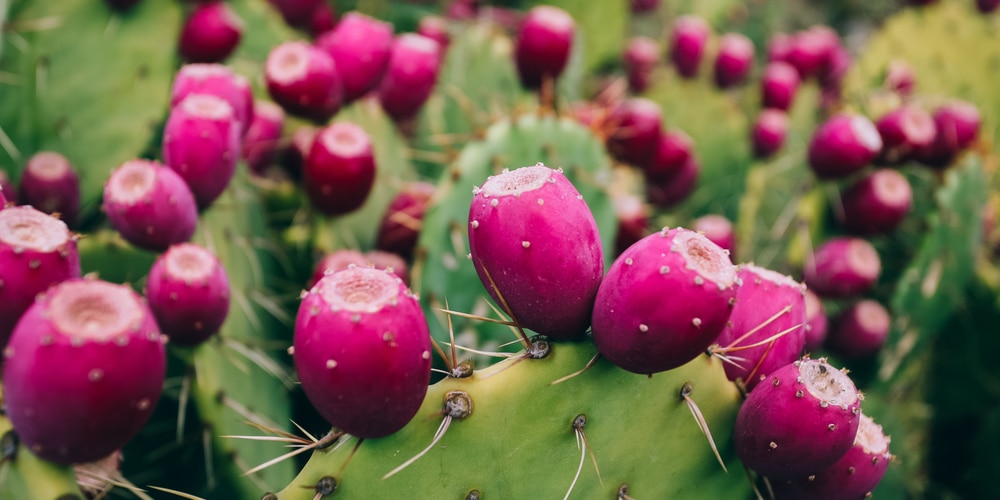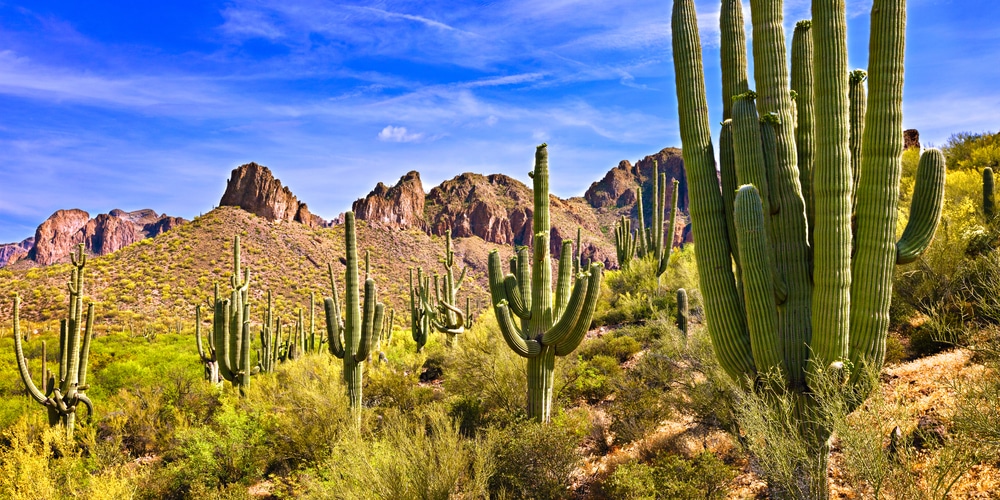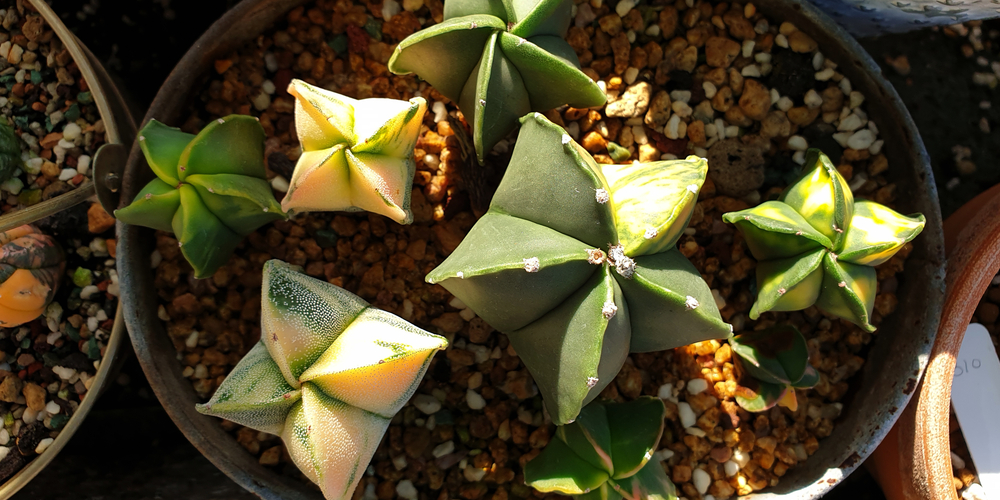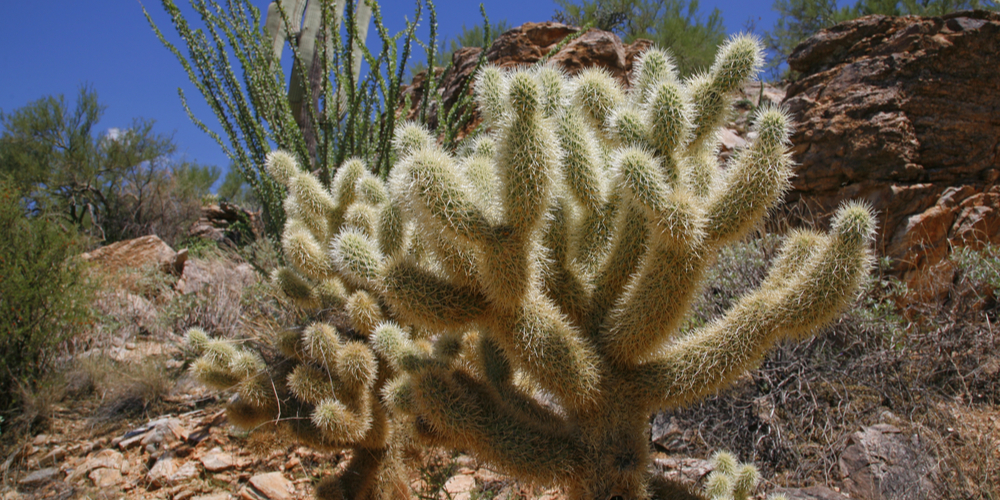If you are looking for a way to increase the aesthetics of your garden without much effort, planting a couple of cacti might be your best solution. These thick plants tolerate various conditions and don’t require much attention from your side under adequate conditions. But what cacti do well in zone 8 climate?
Keep reading our “Zone 8 Cactus” essential guide we put together to find out about our favorite varieties for this region. The good news is that zone 8 offers the ideal conditions to grow some of the most versatile species of cacti with excellent success rates. In these areas, freezing does occur from time to time, but it is not frequent. Plus, it tends not to last for long. Still, the type of cactus you choose for your house should be hardy to thrive outdoors in zone 8.
Cactus Varieties that Grow Well in Zone 8
Beavertail Cactus
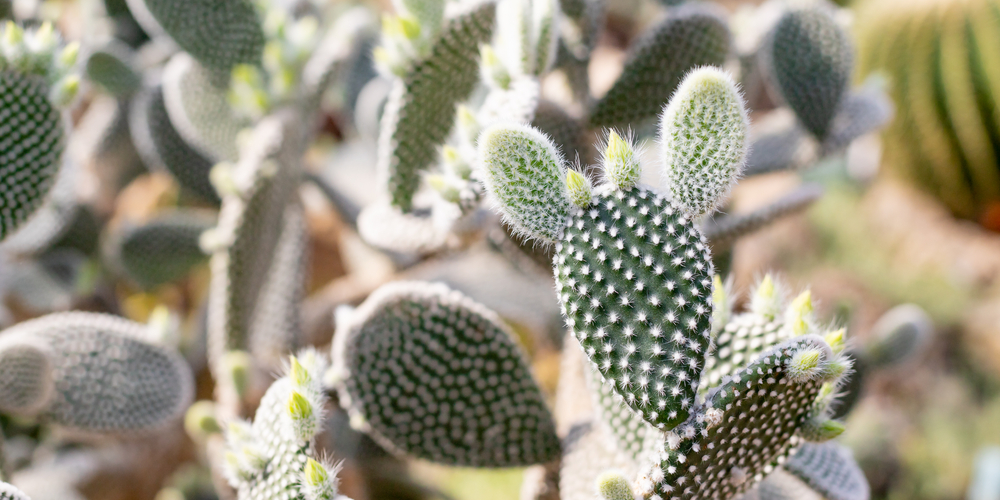
Beavertail cactus is a prickly pear variety with blue-green pads that grows six feet wide and no more than 20 inches high. The plant produces attractive crimson flowers during the summer that add a delicate color to the green background.
These cacti adapt to several soil conditions and don’t mind periods of drought. You can place them in a container, but ensure it has drainage holes to prevent rotting the roots of your plants. Use a cactus-specific fertilizer once per year for best results. Place your cactus under the full sun and in well-drained soil. Once established, the plant won’t need much help from your side to keep growing.
Strawberry Hedgehog Cactus
Also known as the “purple torch,” the strawberry hedgehog cactus is a dense species of succulents that produces branches of spined stems around the center. Pair this plant with other succulents and wildflowers for a more dramatic effect.
These plants grow well under full sunlight and look attractive in rock gardens. If you decide to plant them in a container, make sure you use fast-draining cactus mix and a pot with drainage holes.
Prickly Pear Cactus
One of the most versatile succulents, the prickly pear cactus thrives from hardiness zones 2 to 11. You will have no problems growing it in your region. With its attractive flowers, which grow about four inches in size and add a splash of bright yellow to any location you decide to plant it, this cactus produces edible fruits too.
Under ideal conditions, this plant can grow up to 15 feet tall and six feet wide. If planted in a pot, consider fertilizing your plant once per year with a suitable product. If you prefer placing it outdoors, there is no need to feed the plant, provide that you locate it somewhere sunny and in well-drained soil.
Related Article: Overwatered Prickly Pear Cactus: Causes and How to Recover
Saguaro
To make a statement in your garden, consider adding a saguaro. Native to the dry areas of Mexico, this tall cactus is one of the most iconic succulents in the world. It is tall (the plant can reach up to 60 feet in height!) and voluminous. In zone 8, you may have to protect this plant in case of frost.
While suitable to the region’s conditions, these cacti are not cold-tolerant. To avoid exposing your plant to unbearable temperatures, consider planting it in a pot (at least while not as high) and place it indoors when needed. Luckily, the saguaro is a slow grower: it may take more than 100 years to reach maturity. Pair them with prickly pears for an even more dramatic effect.
Star Cactus
Start cactus, also known as monk’s hood, can grow up to 40 feet high. The name refers to the five to eight ribs surrounding each stalk and often twist into spirals. Start cactus can add attractive texture and volume to your yard.
Plus, they produce bright yellow flowers that attract plenty of pollinators during the blooming season. You can plant it in groups in rock beds or a wide container. Don’t forget to locate your plant under full sun to get the best results.
Teddy Bear Cholla Cactus
Teddy bear cholla cactus is a type of succulent that resembles a tree and grows well in zone 9. Its spines are dense and appear fluffy, like a teddy bear. But don’t let their looks trick you: they are hooked and sharp. The plant grows about six feet tall. Plant it with wildflowers or perennials for better aesthetics.
